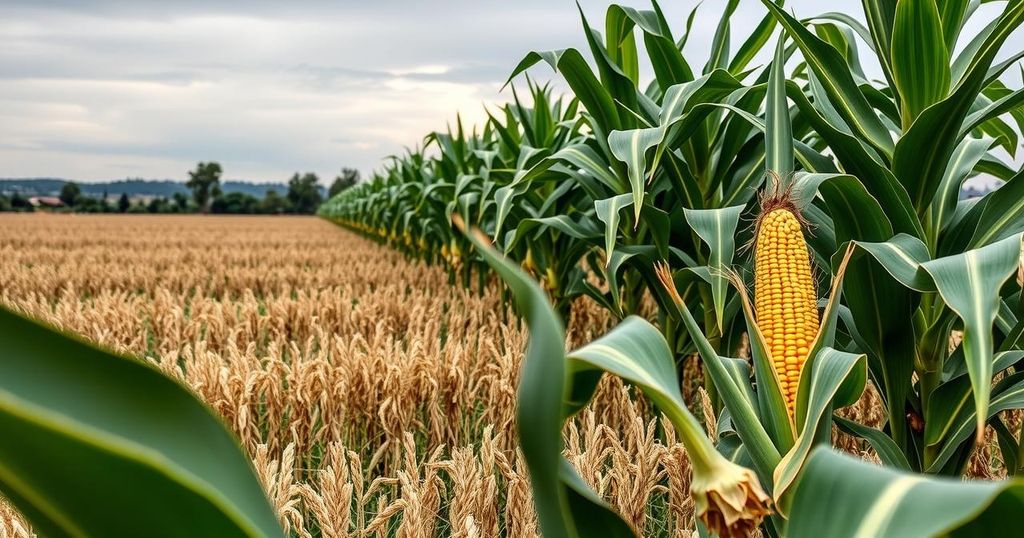Dry Weather Drives Soybean and Corn Prices Up Amid Global Market Changes
CBOT soybean and corn futures surged due to dry weather in Argentina, causing concerns over crop yields. Soybean prices increased by 1.29% to $10.04 per bushel, while corn rose by 0.78% to $4.54. Wheat futures also edged up due to global supply issues. Kazakhstan capitalized on this situation, increasing its grain exports significantly, while French farmers protest against perceived unfair competition.
The soybean and corn futures on the Chicago Board of Trade (CBOT) experienced a notable rise as ongoing dry weather conditions in Argentina have raised concerns regarding crop yields for the upcoming 2024/25 season. The prices for soybeans increased by 1.29%, reaching $10.04 per bushel, while corn rose by 0.78%, settling at $4.54 per bushel. These price hikes were reported alongside a modest increase in wheat futures, which edged up 0.8% to $5.33 per bushel due to global supply constraints stemming from adverse weather conditions. This situation has prompted Kazakhstan to enhance its grain exports significantly, having shipped 3.7 million metric tons of new-harvest grain from September to December, a remarkable 54% increase compared to the previous year. In contrast, French farmers are expressing dissatisfaction through protests, claiming they face unfair competition amid stringent agricultural policies.
The fluctuations observed in the agricultural markets serve as an indicator of the broader consequences of climatic variability, particularly highlighting how weather disruptions can enhance commodity price volatility. As global agricultural dynamics shift, the situation in Argentina serves as a critical case study of the world’s vulnerabilities to climate change impacts on crop production. Shifts in supply routes and export strategies have been noted, with nations like Kazakhstan capitalizing on opportunities whilst others, such as France, contend with domestic pressures linked to globalization and competition.
Recent developments underscore the shifting landscape of global agriculture, signaling crucial implications for economic policies and investment strategies moving forward. These changes draw attention to how nations must adapt their agricultural practices in response to climatic challenges, a matter that is becoming increasingly significant in the geopolitical grain trade. The case in Argentina is particularly emblematic of the pressures faced by agricultural markets worldwide, prompting a reevaluation of food security initiatives and trade policies at an international level.
The recent surge in soybean and corn prices can largely be attributed to the adverse weather conditions experienced in Argentina, a key agricultural producer. Dry spells in the region have raised fears about potential crop yield declines, compelling investors to react to the changing supply dynamics. In response to these changes, Kazakhstan has ramped up its grain export capability, seizing the opportunity created by Argentina’s struggles. This interplay of local weather conditions and global market responses highlights significant factors influencing agricultural sectors worldwide, from pricing to export strategies and farmer discontent in Europe.
In summary, the ongoing dry weather in Argentina has significantly influenced the agricultural commodities markets, resulting in rising prices for soybean and corn futures. This situation has underscored the vulnerabilities of global agriculture to climate variability and the need for adaptive strategies in response to emerging climate-related challenges. As nations adjust their export tactics in light of weather disruptions, the events in Argentina and Kazakhstan serve to illustrate the interconnectedness of global agricultural markets and the importance of addressing climate change impacts on food production.
Original Source: finimize.com




Post Comment